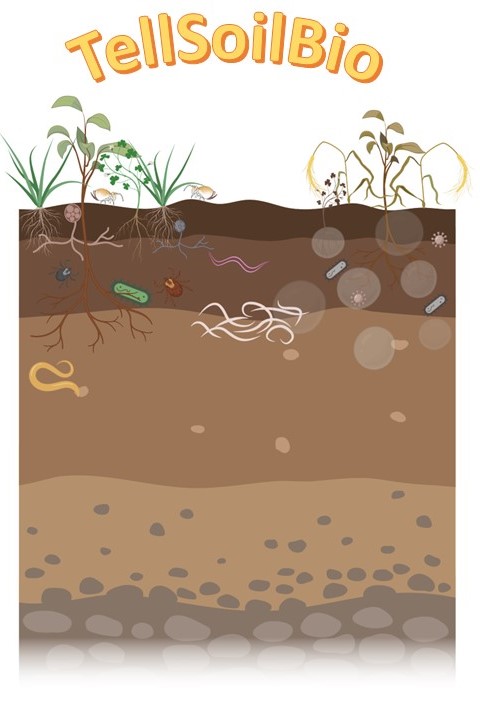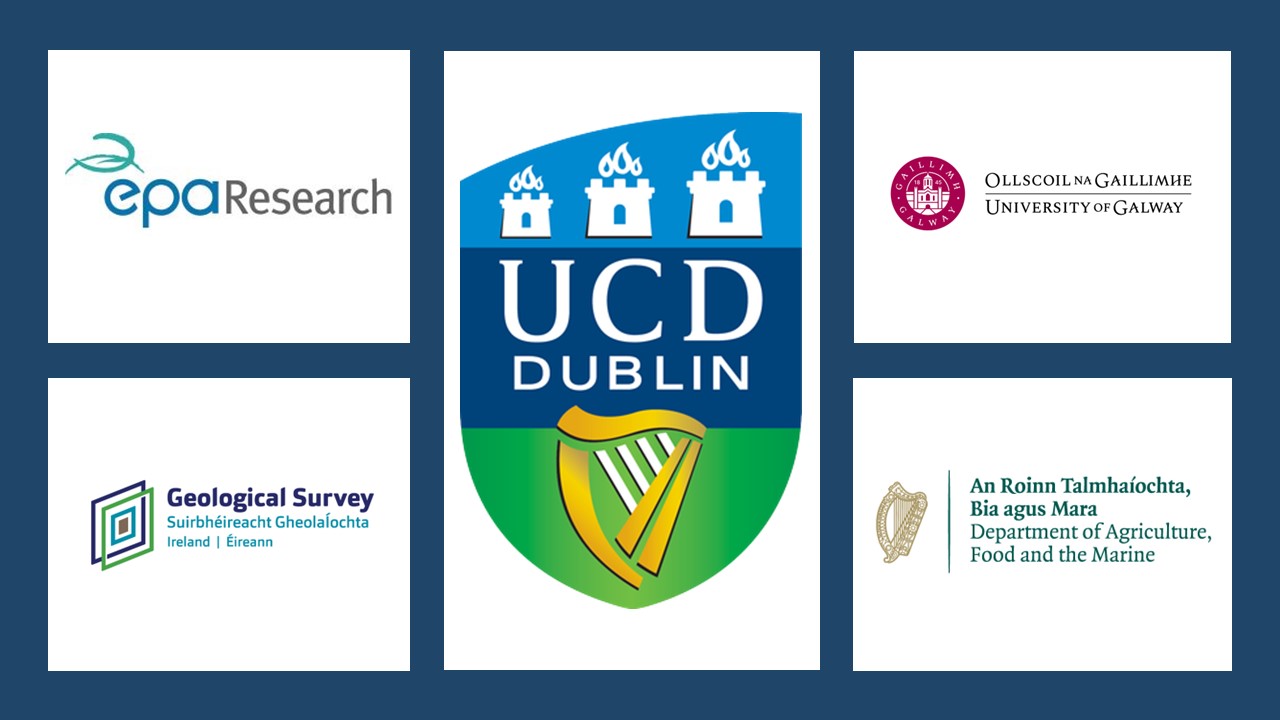About TellSoilBio
The EPA’s State of the Environment Report 2020 makes it clear that Ireland faces persistent problems in relation to biodiversity loss and human-induced degradation of natural ecosystems (EPA 2020). However, most knowledge on terrestrial biodiversity in Ireland and globally is based on research on above-ground taxa including higher plants, vertebrates and some aesthetic insects including butterflies and bees. Consequently, efforts to protect nature are also focused on these selected taxa. Below-ground biodiversity, by contrast, is a neglected, invisible and understudied portion of the overall biodiversity, and it rarely receives the attention it deserves. This urgently needs to change, given the essential roles of healthy, biologically active soils for providing food and wood, supporting environmental and human health, and achieving climate neutrality.
Both EU (Soil Strategy for 2030) and national policy (Programme for Government 2020) have a vision and objectives to achieve healthy soils based on comprehensive legislative frameworks for sustainable land use and soil protection. These objectives also include recognition and protection of soil biodiversity, usually not for its own sake but for the functions (and derived ecosystem services) that it provides. Most soil biodiversity protection is aimed at land use and soil management practices, for example, perennial vegetation types, cultivation practices, use of pesticides, and land spreading of organic materials. In line with that, most research as well as stakeholder outreach and training is focused on these land use and soil management effects on soil biodiversity. For example, the effects of conventional versus reduced forms of tillage have been studied widely, and we now have global synthesis works and meta-analyses on that (Briones and Schmidt 2017).
However, while this approach may provide slightly adjusted advice for major soil types or soil textural classes (e.g. sandy versus clay soils), it does not account for more subtle or large-scale, inherent controls of soil biodiversity that may exist. In Ireland, we have a good understanding of the biodiversity of our soils and their response to the major land use and soil management practices (summarised by Schmidt et al., 2018). What we lack is a more fundamental understanding of the distribution and diversity of soil organisms in Ireland, across larger spatial scales and gradients of inherent soil geochemical properties, which in turn reflect soil formation factors including the geology of the parent materials. This knowledge gap will be addressed by the proposed project.
Conceptually, the TellSoilBio project will investigate spatial patterns of soil biodiversity in Ireland in relation to spatial patterns of soil geochemical properties. If the hypothesis that inherent soil geochemistry exerts controls on soil biodiversity is proven, then the already existing advice on soil management for soil biodiversity protection can be modified and tailored better. This will improve the effectiveness of soil protection and nature conservation. For instance, protection measures could be concentrated on areas that are soil biodiversity hotspots. Given its vast richness, it is never possible to study ALL of the soil biodiversity. Therefore, we need to identify indicators defined as (B.S. Griffiths et al. 2016) suitable taxa that 1) are present in all terrestrial ecosystems of interest; 2) represent all other biodiversities ; 3) are responsive to impacts, and 4) are, ideally, easy to monitor. The proposed project will therefore identify suitable soil bioindicators and test the best techniques for monitoring them.
The TellSoilBio project will deliver usable outputs in the form of analysed and mapped data showing spatial correlations between soil geochemistry and areas of high and low biodiversity. Such mapped information will assist us to understand natural patterns in soil biodiversity, as well as agricultural productivity and land use suitability relying on soil biological activity (e.g. landspreading of industrial organic wastes and sewage products).

